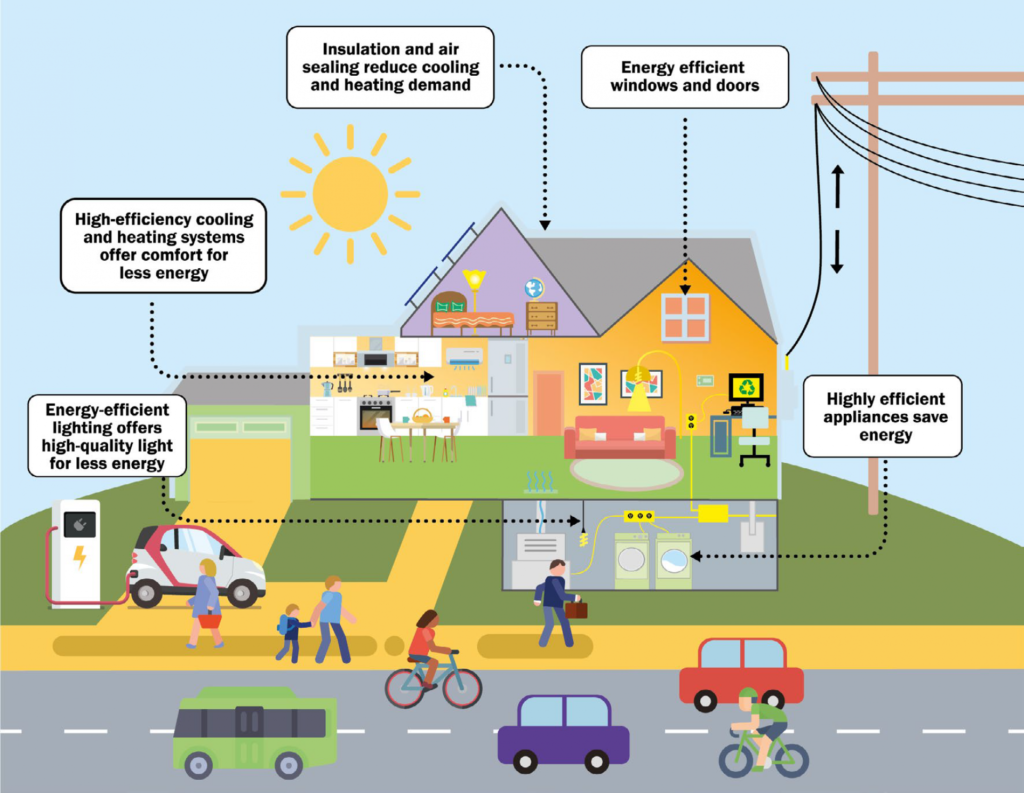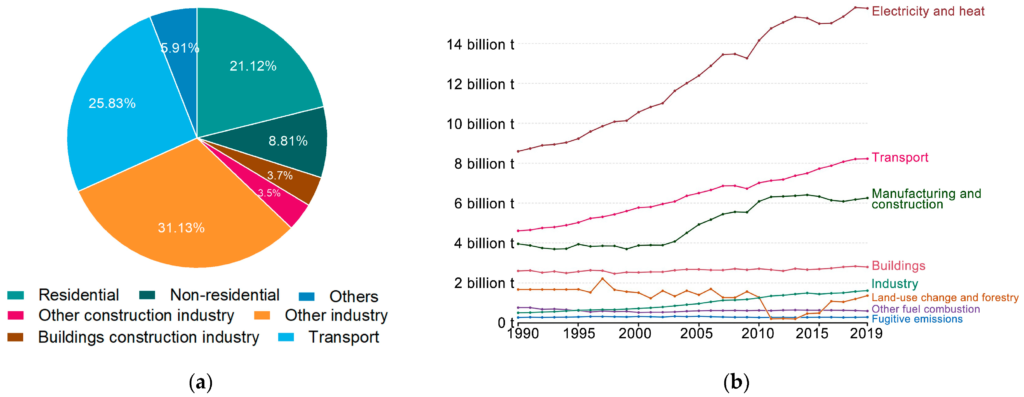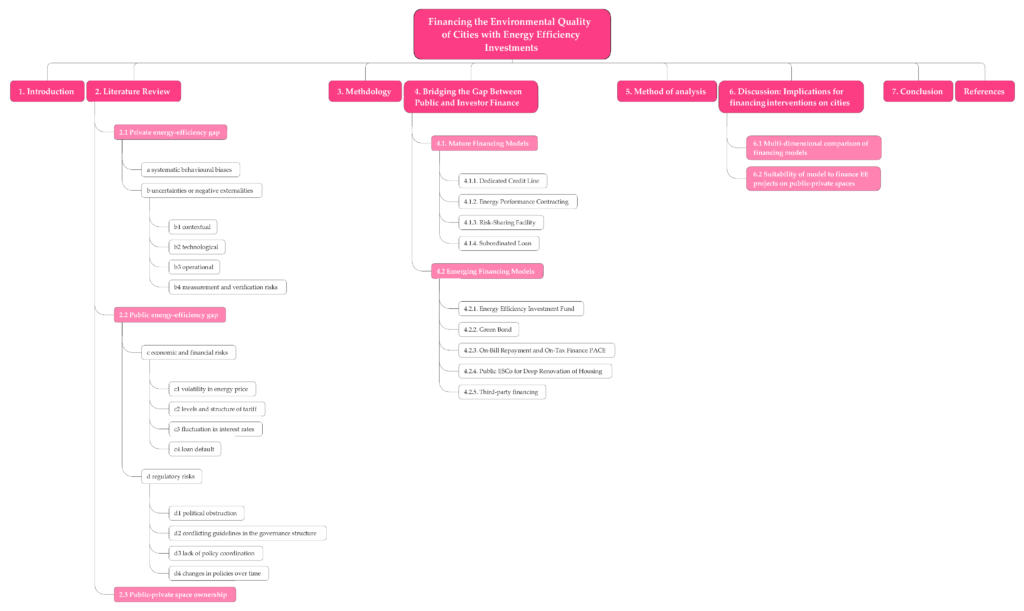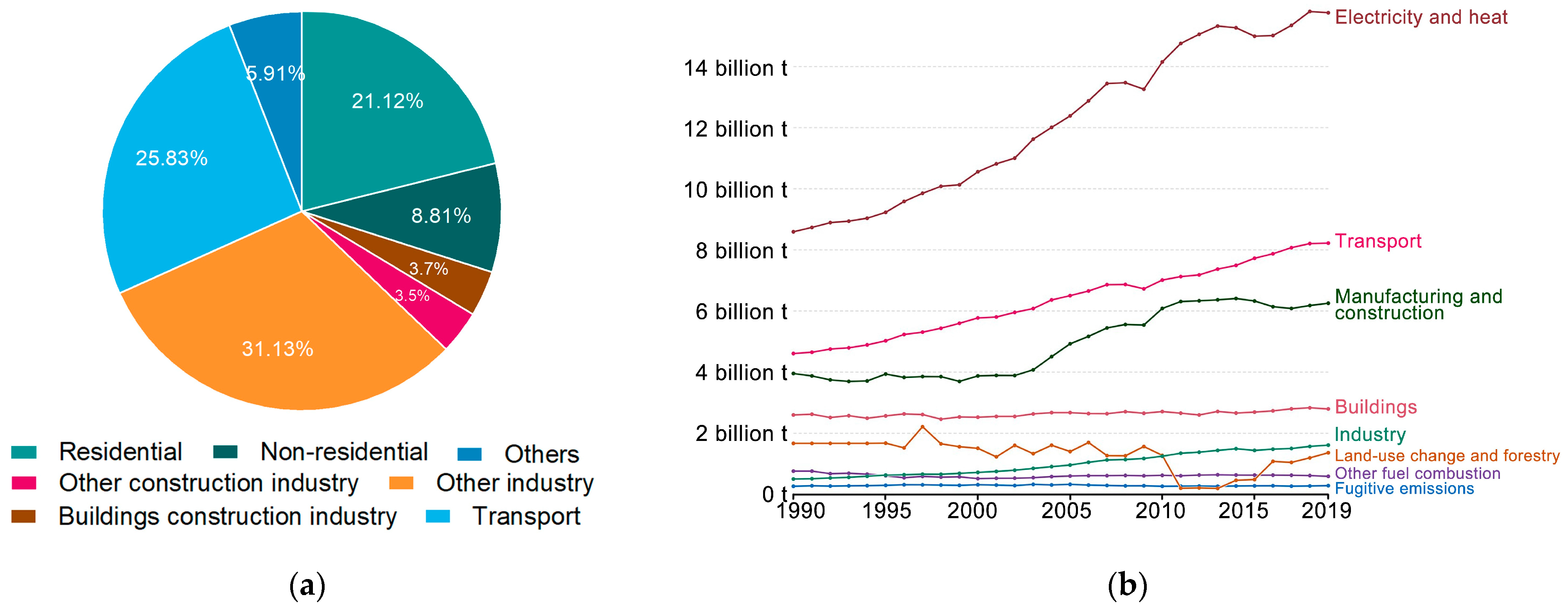Looking to expand your knowledge on fences and their impact on home energy efficiency? Look no further! This article aims to provide comprehensive and engaging content about various fence types, sizes, shapes, and materials. With a focus on educating readers, it explores the characteristics, advantages, and considerations of different fence types, such as wooden, chain-link, vinyl, and metal fences. Additionally, it delves into the importance of choosing the appropriate size and shape of a fence based on specific requirements, property size, and architectural considerations. By providing practical advice and insights, this article will equip you with the knowledge to make informed decisions when selecting and installing fences. So, read on and discover the fascinating world of fences and their impact on home energy efficiency.
107. The Impact of Fences on Home Energy Efficiency

1. Introduction to Home Energy Efficiency
Home energy efficiency refers to the ability of a home to conserve and effectively use energy, resulting in the reduction of energy consumption and costs. It involves implementing various measures and adopting sustainable practices to minimize energy wastage and optimize energy usage. Energy-efficient homes not only benefit the environment by reducing greenhouse gas emissions but also provide homeowners with financial savings through decreased energy bills.
2. Factors Affecting Home Energy Efficiency
Several factors contribute to the overall energy efficiency of a home. These factors include insulation, ventilation, heating and cooling systems, appliance efficiency, lighting, and windows and doors. Each of these elements plays a crucial role in determining the energy consumption and efficiency of a home, and any improvements made in these areas can result in substantial energy savings.
3. The Role of Fences in Home Energy Efficiency
While fences are primarily known for their functionality in providing privacy, security, and defining property boundaries, they can also have a significant impact on the energy efficiency of a home. Fences can act as barriers to airflow, affecting the insulation and ventilation of a property. Therefore, considering energy efficiency when choosing and designing fences is essential for maximizing the overall energy performance of a home.
4. Types of Fences and Their Energy Efficiency
Different types of fences have varying levels of energy efficiency. Let’s explore a few common types:
4.1 Wood Fences
Wood fences are a popular choice due to their aesthetic appeal and versatility. However, their energy efficiency depends on factors such as the thickness and quality of the wood used. Additionally, the design of the fence and the presence of gaps or openings can affect its overall energy efficiency.
4.2 Vinyl Fences
Vinyl fences are known for their durability and low maintenance requirements. They provide good insulation, which can contribute to energy efficiency. However, the energy efficiency of a vinyl fence can vary based on its thickness and whether it is filled with insulation.
4.3 Metal Fences
Metal fences, such as aluminum or steel, can provide excellent durability and security. However, they are not typically known for their energy efficiency since metal is a good conductor of heat and cold. Adding insulation or combining metal fences with other materials can help improve their energy efficiency.
4.4 Chain-Link Fences
Chain-link fences are often chosen for their affordability and functionality. However, they offer limited insulation properties and may not contribute significantly to energy efficiency. Consideration should be given to incorporating other energy-efficient features alongside chain-link fences.
4.5 Composite Fences
Composite fences combine materials such as wood and plastic to provide a durable and low-maintenance alternative. Their energy efficiency can vary depending on the composition and design of the fence.

5. Fence Materials and Their Impact on Energy Efficiency
The choice of fence material can greatly impact the energy efficiency of a fence. Let’s take a closer look at the energy efficiency of different fence materials:
5.1 Wood as a Fence Material
Wooden fences can vary in their energy efficiency depending on factors such as the type of wood used, its thickness, and how well it is sealed. A properly constructed and maintained wooden fence can provide some insulation, helping to reduce energy consumption.
5.2 Vinyl as a Fence Material
Vinyl fences are often considered more energy efficient than wood fences since they typically provide better insulation. Vinyl fences are manufactured with insulating properties, and they do not require painting or staining, reducing ongoing maintenance needs.
5.3 Metal as a Fence Material
Metal fences, such as aluminum or steel, are not known for their energy efficiency due to their ability to conduct heat and cold. However, incorporating insulation materials within the metal fence structure can help improve its energy performance.
5.4 Chain-Link as a Fence Material
Chain-link fences offer minimal energy efficiency benefits since they provide limited insulation properties. For homeowners concerned about energy efficiency, considering other fence materials or combining chain-link fences with additional insulation features may be advisable.
5.5 Composite as a Fence Material
Composite fences, made from a combination of wood and plastic materials, can provide energy efficiency benefits depending on the composition and design. The plastic component can contribute to insulation properties, while the wood component adds durability and aesthetic appeal.
6. Fence Height and its Influence on Energy Efficiency
The height of a fence can influence energy efficiency in several ways. Let’s explore some factors to consider:
6.1 The Relationship Between Fence Height and Energy Efficiency
Taller fences offer greater privacy and security but can also impact energy efficiency. Higher fences can block natural airflow, reducing ventilation and potentially causing areas of the property to remain damp or hot. It’s important to strike a balance between fence height and maintaining proper ventilation for optimal energy efficiency.
6.2 Factors to Consider for Optimal Energy Efficiency
When determining the height of a fence for energy efficiency, consider the climate, prevailing wind direction, and overall landscaping. Strategic placement of openings or gaps in the fence can facilitate airflow and prevent the formation of stagnant pockets of air, leading to improved energy efficiency.

7. Fence Design and Energy Efficiency Considerations
The design of a fence can significantly impact its energy efficiency. Here are some factors to consider:
7.1 Choosing a Fence Design for Energy Efficiency
When selecting a fence design, look for options that allow for proper airflow and ventilation. Open or lattice-like designs can facilitate better airflow, helping to regulate temperature and reduce the strain on heating and cooling systems.
7.2 Factors to Consider in Fence Design for Better Energy Efficiency
Consider the orientation of the fence and its impact on natural lighting. A well-designed fence can allow for adequate sunlight to enter the property, reducing the need for artificial lighting during the day. Additionally, using materials with lighter colors can help reflect heat away from the property, contributing to better energy efficiency.
8. Insulation and Energy Efficiency in Fences
Incorporating insulation within fences can significantly contribute to energy efficiency. Let’s explore some key aspects:
8.1 Types of Fence Insulation
There are various types of fence insulation available, including fiberglass, foam, or cellulose insulation. These materials can be inserted within the structure of the fence or added as insulation panels for improved energy efficiency.
8.2 Benefits of Insulated Fences
Insulated fences provide enhanced thermal resistance and can help maintain a stable and comfortable temperature within the property. They can reduce heat loss during colder months and minimize heat gain during warmer seasons, resulting in reduced energy consumption.
8.3 Installation and Maintenance of Insulated Fences
Proper installation and regular maintenance of insulated fences are crucial for their long-term energy efficiency. Ensuring the insulation remains intact and free of gaps is essential for maximizing the benefits of the insulation material.
8.4 Cost Considerations
While insulated fences can provide energy efficiency benefits, it’s important to consider the upfront costs associated with the installation and insulation materials. However, the long-term energy savings and improved comfort levels within the property often outweigh the initial investment.

9. Landscaping and Fence Placement for Energy Efficiency
Integrating landscaping with fence placement can enhance energy efficiency. Let’s explore some considerations:
9.1 Using Landscaping to Enhance Fence Energy Efficiency
Strategic placement of trees, shrubs, or hedges around the perimeter of the property can act as natural windbreaks and create microclimates within the property. This can help regulate temperature and reduce the strain on heating and cooling systems, leading to improved energy efficiency.
9.2 Proper Placement of Fences for Optimal Energy Efficiency
Consider the orientation of the property and prevailing wind direction when positioning fences. Placing fences perpendicular to the wind can create pockets of still air, impacting ventilation and potentially reducing energy efficiency. Strategic positioning of fences to allow for proper airflow is important for maintaining energy-efficient environments.
10. Maintenance and Upkeep for Energy Efficient Fences
Regular maintenance and upkeep are essential for preserving the energy efficiency of fences. Here are some key practices:
10.1 Regular Maintenance Practices
Periodically inspect fences for damage, decay, or gaps that may compromise their energy efficiency. Regularly clean and remove debris from the fence to prevent the accumulation of moisture, which can lead to rot and reduce insulation properties.
10.2 Repairing and Sealing Fence Gaps
Identify and repair any gaps in the fence structure to ensure optimal insulation. Using sealants or weatherstrips can help prevent air or moisture leaks, improving the overall energy efficiency of the fence.
10.3 Painting or Staining for Enhanced Energy Efficiency
Applying a reflective paint or stain to the fence can contribute to energy efficiency by reducing heat absorption and reflection. Lighter colors tend to reflect sunlight, preventing excess heat buildup and minimizing the strain on cooling systems.
10.4 Professional Inspection and Maintenance Services
Engaging professional fence inspection and maintenance services can ensure that fences are kept in optimal condition. Professionals can identify potential issues, provide guidance on energy efficiency improvements, and carry out necessary repairs or maintenance tasks.

11. Case Studies: Examples of Energy Efficient Fences
Examining case studies of energy-efficient fences can provide practical insights and inspiration for homeowners. Let’s explore a few examples:
11.1 Case Study 1: Energy Efficient Wood Fence
In this case study, a homeowner replaces an old wooden fence with a new one constructed using thicker and higher-quality wood. The fence is designed with minimal gaps and is sealed to minimize air leaks. The increased insulation provided by the new fence results in reduced energy consumption for heating and cooling.
11.2 Case Study 2: Energy Efficient Vinyl Fence
This case study focuses on a homeowner who chooses to install a vinyl fence filled with insulation panels. The additional insulation properties provided by the fence contribute to maintaining a more comfortable temperature within the property, reducing the need for artificial heating and cooling.
11.3 Case Study 3: Energy Efficient Metal Fence
In this case study, a homeowner combines metal fence panels with foam insulation inserts. The insulation helps improve the energy efficiency of the metal fence by providing thermal resistance and reducing heat conduction. The result is a more energy-efficient property with reduced energy consumption.
12. Conclusion and Key Takeaways
Fences can have a significant impact on the energy efficiency of a home. Choosing the right fence material, considering fence height and design, incorporating insulation, and strategically positioning fences can all contribute to improved energy efficiency. Regular maintenance and upkeep are essential to preserve the energy efficiency of fences over time. By implementing energy-efficient fencing strategies, homeowners can reduce their energy consumption, lower energy costs, and create a more sustainable and comfortable living environment.
Question and Answer:
- How does the choice of fence material affect energy efficiency?
- The choice of fence material can impact energy efficiency. Materials like wood or vinyl can provide insulation, while metal fences are known for their heat conducting properties.
- Does fence height influence energy efficiency?
- Yes, fence height can impact energy efficiency. Taller fences can obstruct natural airflow and affect ventilation, potentially leading to damp or hot areas on the property.
- Are there any fence designs that promote energy efficiency?
- Yes, fence designs that allow for proper airflow and ventilation, such as open or lattice-like designs, can contribute to better energy efficiency.
- Can insulation be added to fences?
- Yes, insulation can be incorporated into fences to improve energy efficiency. Materials like fiberglass, foam, or cellulose insulation can be inserted within the fence structure or added as insulation panels.
- How can landscaping enhance fence energy efficiency?
- Strategic placement of trees, shrubs, or hedges around the property can act as natural windbreaks, regulating temperature and reducing the strain on heating and cooling systems.
- What are some regular maintenance practices for energy-efficient fences?
- Regularly inspecting fences for damage or gaps, cleaning them to prevent moisture accumulation, and repairing or sealing any gaps are crucial maintenance practices for energy-efficient fences.
- Can painting or staining a fence enhance energy efficiency?
- Yes, applying reflective paint or stain to a fence can help improve energy efficiency by reducing heat absorption and reflection. Lighter colors reflect sunlight, minimizing heat buildup.
- How can professional inspection and maintenance services contribute to energy-efficient fences?
- Professional services can identify potential issues, provide guidance on improving energy efficiency, and carry out necessary repairs or maintenance tasks to ensure optimal fence performance.
- What are some benefits of energy-efficient fences?
- Energy-efficient fences can contribute to reduced energy consumption, lower energy costs, and a more comfortable living environment. They also help in minimizing environmental impact by reducing greenhouse gas emissions.
- What are some cost considerations for energy-efficient fences?
- While energy-efficient fences may require an initial investment, the long-term energy savings and improved comfort levels within the property often outweigh the upfront costs. It’s important to consider the overall benefits when evaluating cost considerations.
